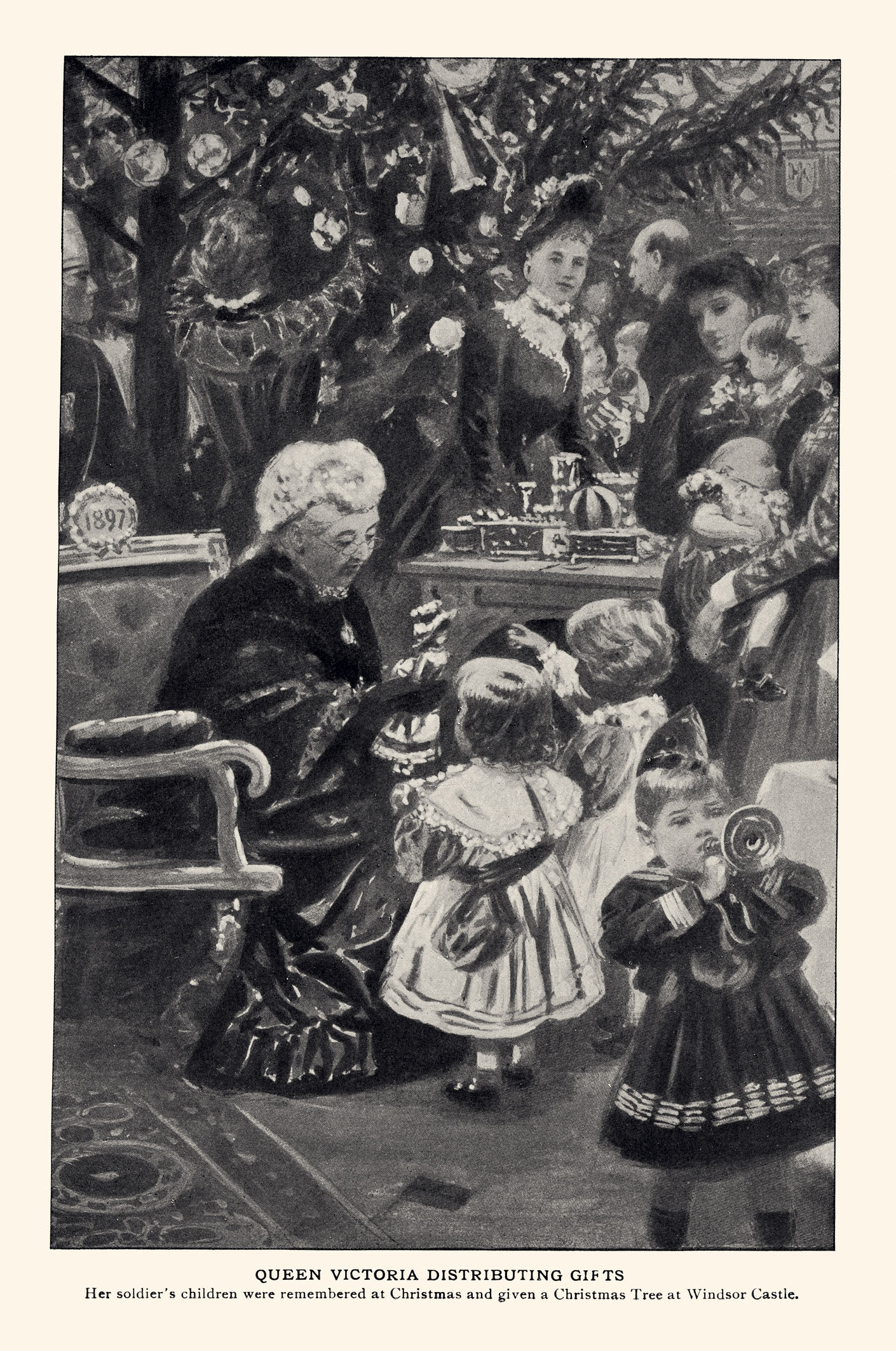
“The holiday season” is ubiquitous in American culture, influencing nearly every aspect of our lives. People get a day or more off, stores offer discounts before closing early and families come together to enjoy a big meal. Two Texas A&M University College of Arts and Sciences professors provide context as to when and why the season became so important to our society and how it influences our collective experience today.
Humble Beginnings
Obviously, the holiday season did not spring out of thin air but from a gradual buildup throughout history. Dr. Troy Bickham, a professor in the Department of History and director of the Melbern G. Glasscock Center for Humanities Research, says that many U.S. holiday traditions have roots in the American Colonial period, given that Christmas and the New Year were observed by Protestant German immigrants who composed about half of the population in Pennsylvania.
“Many would have put up Christmas trees and other things we would recognize today as Christmas-related,” Bickham said. “It was also observed in parts of Virginia and other British colonies. It was not a big deal yet and was most associated with 'raucous revelry' that included heavy drinking, celebrations and 'general excess.' In fact, for these reasons in the 17th century, celebrating Christmas was effectively outlawed in England by the Puritans as well as in Puritan-governed Massachusetts. It was not canceled, but one couldn’t celebrate it with festivities or by taking holiday from work or anything like that.”
According to Bickham, the concept of the holiday season having a “family-oriented” spirit came to be in the 1840s to 1850s with help from Charles Dickens’ A Christmas Carol (1843).

“People see A Christmas Carol as reflective of how Christmas was celebrated in the 1840s,” Bickham added. “It’s not. It’s prescriptive. It’s saying, ‘This is how Christmas should be celebrated. It shouldn’t be a big drunken festivity with raucousness.’ If you look at A Christmas Carol, Christmas is very family centered. It’s a day of rest negotiated by Bob Cratchit and his boss Ebenezer Scrooge. Once granted, Cratchit doesn’t then go out to get drunk with his friends, but to go home and have a family-centric Christmas. Scrooge is redeemed by his generosity to the poor and becoming an adopted member of the Cratchit family.”
Deck The Halls
At the same time, Queen Victoria, who had a German background and married a German prince, established Christmas decorating as a family practice through the Christmas tree, a German tradition, when she invited the press to sketch her decked-out home. The images were printed throughout the English-speaking world, including the United States, according to Bickham.

“All of a sudden, the Christmas tree is no longer an ethnic German practice, but now every middle-class family in North America is putting up a Christmas tree,” Bickham said. “Those are some of the foundations, and the holiday season has evolved with Americans since. It’s flexible enough to reflect various American cultures, including immigrant groups who can bring mixes of their own traditions. It’s kind of a melting pot, and everybody can bring something different.”
After the American Civil War, other holidays in the season became elevated to promote unification and healing. For example, Thanksgiving, Christmas Day and New Years are established as federal holidays by law in 1870. In that spirit, Americans now see how different communities observe the season in their own ways, whether it be the Feast of the Seven Fishes, Kwanzaa, Christmas, Hanukkah, Las Posadas and many more.
Of course, the American market has adapted to the holiday season. During the Depression era, when the American underdog becomes an important figure, the Montgomery Ward department store invented the children’s book Rudolph the Red-Nosed Reindeer (1939) to help slumping sales, according to Bickham. Even the popularization of Santa Claus as a human-sized man in red clothing is due to a Coca-Cola Company campaign, whereas before, Santa Claus came in a variety of shapes, hues and sizes small enough to fit through chimneys without magic.
Make Way For Movies
The film industry also reflects how omnipresent the holidays are in American society. Half of the highest-grossing films of all time were released during the holiday season, matched only by summer releases. According to Dr. James Francis, a senior lecturer in the Department of English who specializes in horror studies, the holidays have been a part of film narratives as early as the start of cinema in short- and long-form features. For example, A Christmas Carol was adapted into film as early as 1901 during the silent film era.
“Much of what early cinema represented, even in stories that featured holidays, were tales of redemption, morality, ethical dilemmas, etc.,” Francis said. “People connected to these movies because of their strong associations with depicting humanity at its most vulnerable, emotional and celebratory. Of course, the early days of cinema were also a visual spectacle, so people were simply intrigued by the new medium of storytelling.”
Though the COVID-19 pandemic stunted the film industry’s revenue in recent years, the holiday film season maintains its grasp on the cinematic landscape. Major film releases this year include the latest installments of the Marvel, Disney, Hunger Games and Willy Wonka franchises as well as a remake of the box office success The Color Purple. However, streaming options also allow for films to take advantage of the holiday season in other ways, such as the famous Hallmark Media film empire.

According to Francis, Hallmark Media productions “often focus on the standard love story in which two characters meet, fall for each other, have a misunderstanding that breaks them apart, and then reunite to close out the story... Holiday seasons work so well with this structure because they represent times of anxiety, uncertainty, new beginnings and all the other emotions and behaviors of new relationships.”
Hallmark Media maintains an estimated $350 million in annual advertising revenue through holiday films alone. In 2021, Americans watched 183 billion minutes of content during the Christmas week, according to Nielsen, more than the 160 billion minutes watched during March 2020. when stay-at-home restrictions began in the U.S. Clearly, the holiday season continues its pervasive influence in American society through many aspects, whether it be cultural or economic.
“American culture — generally speaking — is hyper-focused on holiday seasons due to the commercialization of them, the nostalgia of them (our childhood memories don't leave us), the historical development of them regarding what they initially meant versus how they are celebrated today, and so much more,” Francis said. “They are a part of the year's trajectory, passing of seasons, markers of special occasions, and film finds its way into that lived experience as a way to remind us of all of these things, typically in a feel-good manner that is simply for entertainment — an escape from reality.”
Professors’ Top Picks
For those who partake in holiday season film-watching, Francis and Bickham recommend the following options:
“I would have to say Krampus (2015) is a great winter-season holiday horror film,” Francis said. “It's much better than it should be, but the cast and crew put together a solid film. I would complement that viewing with Rare Exports: A Christmas Tale (2010), a Finnish film that also details the story of the Krampus figure as an anti-Claus depiction. Eight Crazy Nights (2002) tackles the animated world of holiday movies with a focus on Hanukkah and redemption — a favorite for Adam Sandler fans and a different path from the great volume of Christian-centric holiday films offered each year.”
“If it can be any holiday special, then A Charlie Brown Christmas (1965) because I grew up watching it every year with my family, and now, I watch it with my children,” Bickham said. “It’s very nostalgic on a personal level. If it must be a film, then Die Hard (1988), because it’s a counterintuitive Christmas film but still has all the hallmarks — family and redemption of the main character.”
